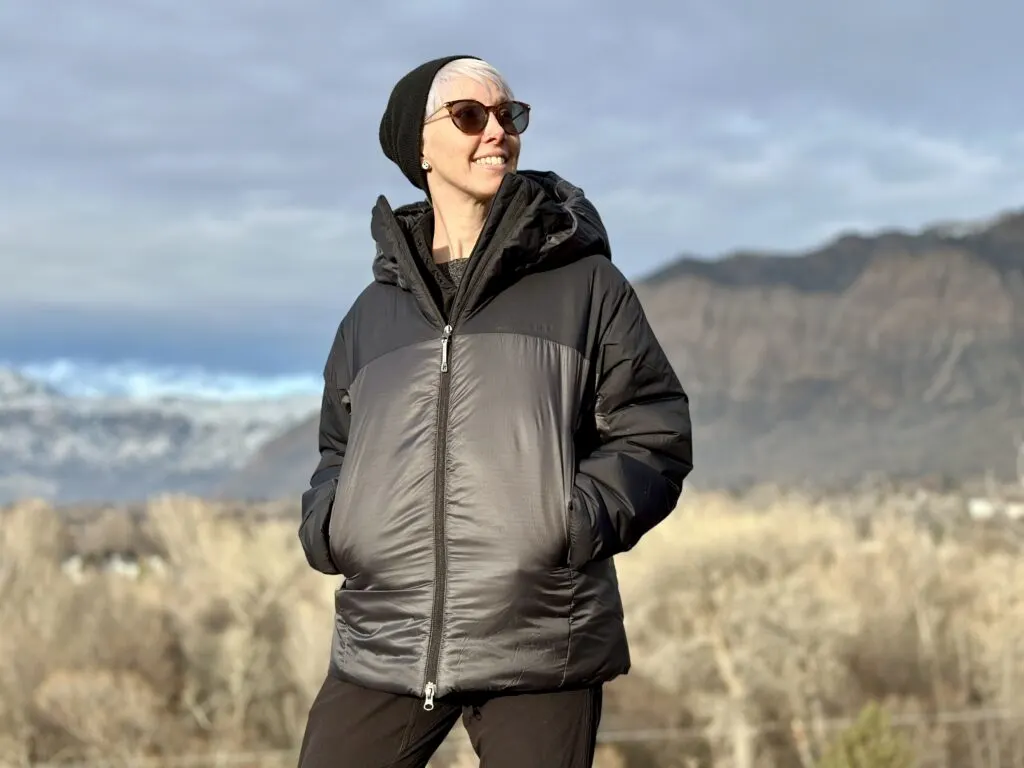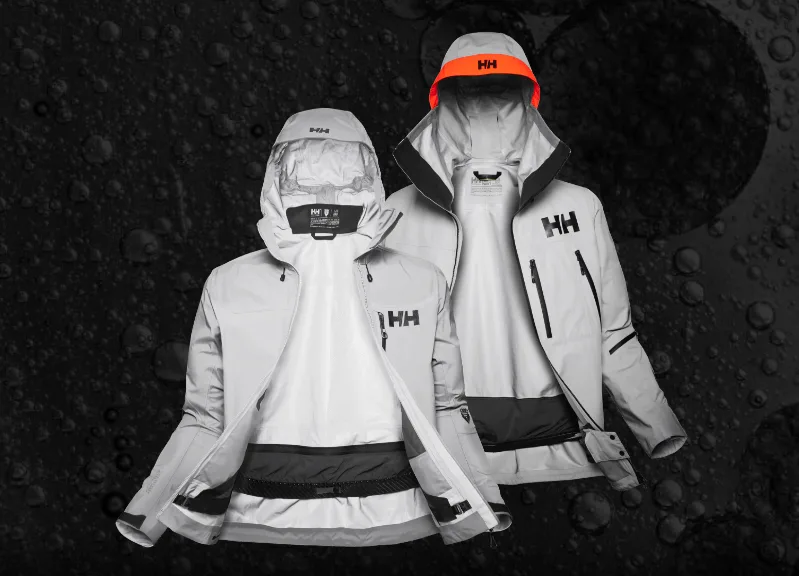The Best Deals on Camping, Backpacking and Outdoor Gear [June 2025]

When it comes to outdoor clothing and gear, there are lots of sustainability terms and definitions that can cause confusion. Two important acronyms that we’re going to tackle here and now: PFCs or PFAS and DWR (Durable Water Repellent). What are PFAS, for crying out loud? And are DWR treatments sustainable? We’re going to break down what they are, why they’re bad for the environment, and how to avoid them.
Want an even more in-depth look at PFAS, where they came from, and why they’re so hard to get rid of? Listen to our friend Meghan’s series on Forever Chemicals on the Outdoor Minimalist Podcast.
What Does DWR Mean?
You’ve likely seen or heard the acronym on product tags, on outdoor forums, or while meandering through an outdoor store: DWR. It stands for “Durable Water Repellent.” What is it, exactly? It’s typically a chemical compound that’s been impregnated into the fabric of the product in question (like a jacket, backpack, pants, etc.) and requires occasional re-applying through an at-home wash-in process in order to make your gear shed water instead of absorb it (read about how to re-waterproof gear easily here). Most water-repellent and waterproof outdoor clothing and gear exists because of DWR treatments.
And waterproof gear is extremely important if you’re going to be spending a lot of time outdoors in wet weather where a dry tent, sleeping bag, jacket or fleece can very literally mean the difference between life and death. So it’s not easily avoided and is found in everything from pants to outerwear to backpacks to zippers.
But most DWR treatments contain PFCs or PFAS. What are PFAS? So glad you asked.

What are PFAS?
PFC stands for “Perfluorinated Compounds/Chemicals” or “Perflourocarbons,” which aren’t the same thing. Perflourinated compounds are a group of toxic chemicals that contain per- and polyfluoroalkyl substances. These days, these chemicals are often referred to as PFASs and according to the EPA, “Are among the most potent and longest-lasting type of greenhouse gases emitted by human activities.”
And greenhouse gases mean harmful climate change. What’s more, these chemicals don’t just appear and then harmlessly dissolve over time. No, they persist in the environment (like in soil and waterways) for decades if not centuries, contaminating the planet and building up in waterways, ice, and earth. Which is why they’re often referred to as “forever chemicals.” I’m not a scientist, but if you want to know more about the ins and outs and harmful side effects, check out this article from Mother Jones about PFCs. But long story short: these chemicals aren’t the good kind.
Manufacturers have found pseudo-solutions (“short-chain” compounds) that don’t stick around for as long, but they are far from a permanent solution and still extremely harmful to the environment. Meanwhile, state and federal legistatures are moving toward outright bans of PFAS.
So What are the Alternatives to PFAS and DWR?
Fortunately, many brands, manufacturers and companies are racing to find alternative solutions to these harmful compounds. Nikwax, for example, a brand that makes wash-in water repellent treatments for outdoorists, has been PFAS-free for some time now (since its inception). Other brands, like Helly Hansen, have begun engineering products that don’t require a DWR treatment at all, instead focusing on fiber that’s woven to be waterproof (like in this Verglas shell).
Likewise, other brands like Fjällräven utilize a completely different waterproofing method: heated wax. It may be one of the oldest water repellent treatments, but it still keeps water from soaking into clothes. Vegans will want to check what kind of wax is used for these types of products, though, as it’s usually beeswax.
And even more brands, like Patagonia, are investing in research to find a more sustainable and less damaging option for waterproofing outdoor gear that’s as effective as outdoorists have come to expect from DWR treatments.

How to find PFAS-Free DWR
Update: PFAS are now essentially banned on most products sold in the U.S. But some products that contain these forever chemicals still remain, so… To find products that don’t contain PFAS, check the tag or manufacturer website. Most eco-minded companies that offer waterproof or water-resistant gear will be very forthcoming with info about what’s in their products. Edelrid, for example, offers an Eco-Dry rope sans PFCs. Helly Hansen’s Infinity Shell is engineered to be waterproof without additional treatment. And many rain jackets, like United By Blue’s Recycled Rain Shell, will proudly point out that they use a PFAS-free DWR coating. Deuter as a brand is PFAS-free as of 2020, for example.
Want to know if a product is PFAS-free? Just read the tag or product description. If in doubt, reach out to the brand and ask.
Bottom line
Long story short: if you are looking for waterproof gear, opt for items that contain PFC-free DWR or innovative products that don’t contain coatings at all. If you already have a decent jacket or piece of outdoor gear but they need re-waterproofed, use a sustainable product like Nikwax to reinvigorate the coating instead of buying new. And while yes, it’s nice to have the newest and best high tech gear, remember that a shiny new $400 rain jacket isn’t necessary for many: if day hikes and afternoon bike rides are more your speed than multi-day backcountry treks where cold and wet can create life-threatening situations, the rain jacket or day pack you have will likely do the job nicely.
But when you do gear up to head out in inclement weather, chose your materials wisely and avoid PFAS for the most sustainable gear and planet. Wander on.
•
Check out sustainable rain jackets made from recycled materials here or PFAS-free hybrid jackets here.
